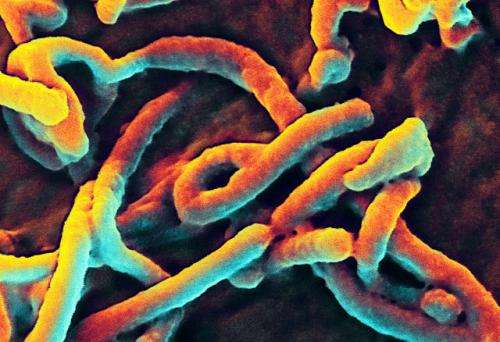Big Data strategies to address Ebola

IBM announced its researchers have used big data analytics to assess the impact of infected animal carriers, or an animal reservoir, in the spread of the Ebola virus in a way not been previously done for earlier disease models. Direct contact with the infected animal – most likely a bat or large snake—whether by touching or eating it—can cause the disease to enter the human population, and then spread.
To help researchers from humanitarian agencies, governments and elsewhere fine tune resource allocation and address the disease-spread chain more holistically, IBM Research has made available open-source computational models through the Eclipse Foundation's free Spatio-Temporal Epimidemiological Modeling framework (www.eclipse.org/stem), which is available here.
"By addressing the source of infection earlier in the disease-spread we believe that it increases the probability that an entity like the World Health Organization (WHO) can not only reduce an ebola outbreak, but also help to prevent a possible pandemic, said Simone Bianco, research staff member, IBM Research - Almaden. "It is important and should not and cannot be understated."
The 2014 West Africa Ebola outbreak was a tragedy of enormous proportions. It caused the death of over 11,000 people, while more than 28,000 cases have been reported. From a socioeconomic, perspective, it has brought close to collapse the three African countries most directly impacted: Sierra Leone, Liberia, and Guinea.
During the outbreak and immediately after its decline, the WHO launched a three-phase program, which aims to increase preparedness and first response, provide critical care, and help prevent the spread of the disease by improving the resilience of the population to an initial infection.
Ebola, whilst a human disease, it is not carried primarily by humans. Primates, including humans and non-human primates like gorillas, are susceptible hosts, in that they are not able to fight the infection and are at high risk of illness and death. The virus becomes human-borne following a contact with an infected carrier animal, a species of animal which has the disease, but does not show clinical symptoms. This is called a spillover event, and it is a frequent occurrence for many diseases. The avian and swine influenza are notable examples, as is Ebola.
In order to identify and successfully implement intervention measures, researchers and governmental agencies often apply epidemiological modeling, the analysis of large amounts of disease-related data. During the epidemic, many researchers, including researchers at the U.S. Centers for Disease Control (CDC), have produced mathematical models and computer simulations to understand the course of the disease and investigate the potential impact of interventions they might implement to combat the spread of the disease.
Initiatives aimed at increasing the number of hospital beds and the accessibility to safe burial have been thoroughly tested for effectiveness in bringing down the infected count. However, very few models have explicitly included the presence of an animal reservoir, and none of them has considered the random nature of those events. A recent publication authored by researchers at IBM, together with colleagues at Montclair State University, has filled that gap by releasing an open-source computational model to study Ebola spread from animals to humans.
The model accounts for random spillover events from infected animals to the human population and shows how dangerous it would be to overlook control of the infection route. In particular, an increase in the number of infectious contacts between animals and humans could have the effect of making the virus so abundant in the population to become endemic, meaning that new introductions from the reservoir would not be necessary for the disease to spread throughout the country.
In this scenario, the virus would propagate itself within the human population irrespective of the animal reservoir and potentially become the first step to a pandemic. Historically, it has been found that it would also make it much more difficult and costly for interventions. And, it would probably make it almost impossible for the disease to die out spontaneously in the absence of fast and strong intervention. Therefore, the public health data from the study reveals the importance of also considering preventing the spread of ebola between the animal reservoir and humans.
More information: Garrett T. Nieddu et al. Extinction pathways and outbreak vulnerability in a stochastic Ebola model, Journal of The Royal Society Interface (2017). DOI: 10.1098/rsif.2016.0847


















